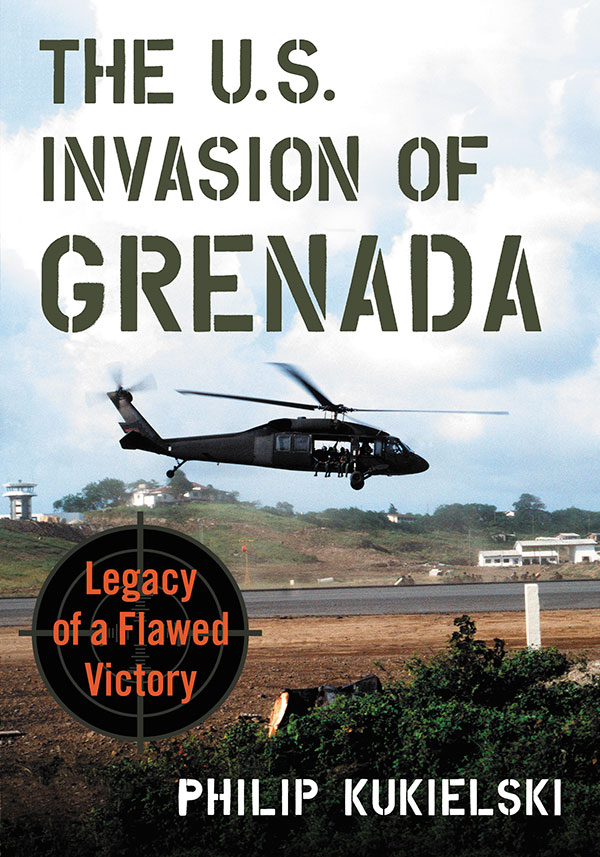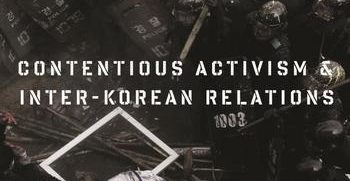Book Review: US Invasion of Granada: Legacy of a Flawed Victory

The Caribbean geopolitical area has been quite neglected in the study of international affairs. The area was a crucial site of Cold War confrontation and it can be of interest to study past events to understand current scenarios.
Philip Kukielski’s book, US Invasion of Granada: Legacy of a Flawed Victory offers a precise reconstruction of 1983 Grenada conflict and US military operation code-named “Fury,” which was conducted to secure American interests in the area against Soviet influence operations. Kukielski is a journalist turned historian and describes himself in the preface of the book as an unaffiliated outsider with three decades of research into the Grenada issue. Kukielski affirms that “the American Goliath did not rest easy on this preordained victory.” Kukielski’s book is organised into 12 chapters that advance generally chronologically through the invasion, from planning stage to final victory, although the background context is not provided until Chapter 11 because Kukielski believes “the provocations for the invasion are more accurately weighed if you know the result.”
The context
The Grenada invasion began on the morning of 25 October 1983, just two days after the bombing of the US Marine barracks in Beirut. By this point, US had already suffered the Vietnam tragedy as well as the hostage crisis at the US embassy in Tehran. Through the lens of political realism, it is therefore possible to affirm that in the post-Vietnam era, after the Iran hostage crisis, and the Hezbollah bombs in Lebanon, there was a strong need for a quick US military victory, both for internal purposes and international audiences. The issue in the invasion of Grenada was thus also about US self-representation as well as perception and misperception of power. Kukielski’s assesses that “by October 1983 the case for Pentagon reform had already achieved critical mass based on the failed Iranian hostage rescue and the Beirut barracks terrorist bombing.”
But there was a quite big difference with Iran or Lebanon. Grenada was in the “backyard” of the US area of interest. Though it was “a Marxist-led Caribbean Nation the size of Atlanta,” it was also only 100 miles from Venezuela and 1,500 miles southeast of Key West, Florida. The US government was alarmed by the construction of a runway which could accommodate the largest Soviet aircraft operating at that time, viewed as a possible aid to a Soviet-Cuban build up in the Caribbean. If true in a worst case scenario, this would have enhanced the Soviet outreach to Central America. Grenada could have also been used as a naval base by the USSR, as had been done in Cuba with the Lourdes station that was used as a listening station and radar facility. In psychological terms, we had here a sort of reactivation of a “chosen trauma” – the Cuban Missile Crisis happened just 20 years before, in 1962.
(Mis)Planning and flawed intelligence
In the Grenada case study, we also see important lessons learned for planning. Kukielski describes how contingency planning for non-combatant evacuation started after the 12 October 1983 coup that removed Grenada’s Marxist leader Maurice Bishop. Kukielski notes that “Marines were expecting that the incursion would be an humanitarian extraction, not a military takeover or regime change invasion. And the planning was more conceptual than concrete.” Kukielski highlights also how the State Department evacuation planning rapidly shifted to a Department of Defense planning for a much larger military operation. US Atlantic Command planners developed a wide range of courses of action and recommended a large joint task force to overwhelm the opposition. Due to the speed of planning operations, the US suffered some degree of blindness related to the Grenadian and Cuban forces. No spy plane overflight was able to reduce the “unknowns” of the terrain and the boots-on-the-ground risks. There was uncertainty surrounding the strength of the Grenadian troops and armed Cuban workers.
Notwithstanding a predominant US force ratio and expert military leadership under then-Major General Norman Schwarzkopf in Operation Fury, Kukielski describes multiple examples of a failed nexus between intelligence and US forces. According to Kukielski, these the result of a trilemma made of faulty intelligence, inadequate communication, and poor coordination. The judgement is quite harsh: “my central thesis is that Grenada was more noteworthy for the shortcomings that for the battles that were won against a mismatched adversary.” The US lost several helicopters in the days of battle because missile batteries of Soviet ZU 23 anti-aircraft artillery were not detected. Chapter 4 is emblematically entitled “SEALs Besieged,” and Chapter 8 “The Enemy is Us,” indicating that there were huge internal problems for the US forces. After rescuing US students on the island at the True Blue campus of St. George’s University, the army rangers learned of more American students at another campus and had to radio for reinforcements.
Economic warfare: A missed factor?
Given the fragile and small-sized economic system of the island, other options could have been adopted rather than a direct military invasion. For example, an economic embargo or political pressure against the key Grenadian leadership would have been successful with a minor degree of “bad press” and international disapproval, both in public diplomacy debate and the UN. A population-centric approach designed to fulfil economic desires and wellness of Grenada’s inhabitants would also have worked. A sort of economic plan to address the needs of the population and then influence and support a change in the local political party system. Kukielski responds to this counterfactual view by arguing that at the time, the focus was different as a direct military intervention would have been, in spite of all the above-mentioned problems, an extraordinary accelerating agent for organisational change in US armed services relationships.
Considering after action evidence, the land invasion made it possible to capture and exploit important documents such as the military assistance agreements between the government of Grenada, the USSR, and Cuba. The captured documents also indicated a Soviet declaration of around $30 million worth of uniforms, machine guns, antitank weapons, antiaircraft guns, and other supplies to be delivered to Grenadian authorities over a five-year period. The potential threat was big, and the joint military act was – despite all the operational deficiencies – successful. As highlighted in the final chapter of the book, a very important internal result was the US congressional reform to shape an effective interoperability of the forces that in the Goldwater–Nichols Act in 1986. From this perspective, the Grenada legacy appears to be a quite positive one, as it re-emerged in highly effective 1991 operation in Iraq.
Diego Bolchini is a cultural analyst based in Rome, Italy. Diego reads security studies at Florence University and has been an instructor in security seminars jointly organised by the University of Buckingham (UK) and the GeoLab Laboratory for Geocultural Analyses, Ionian University (Greece)
This is a review of Philip Kukielski, US Invasion of Granada: Legacy of a Flawed Victory (McFarland, December 2019) ISBN-10: 14766787890
This article is published under a Creative Commons Licence and may be republished with attribution.





